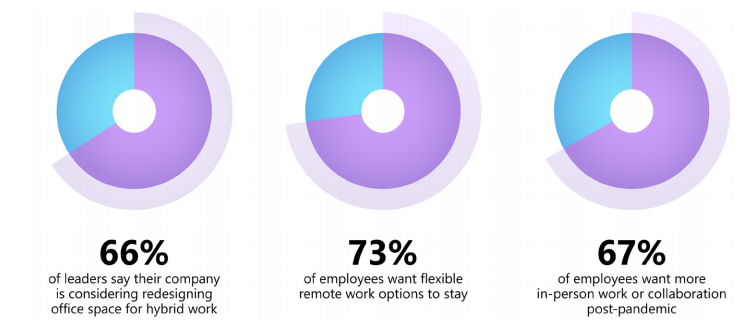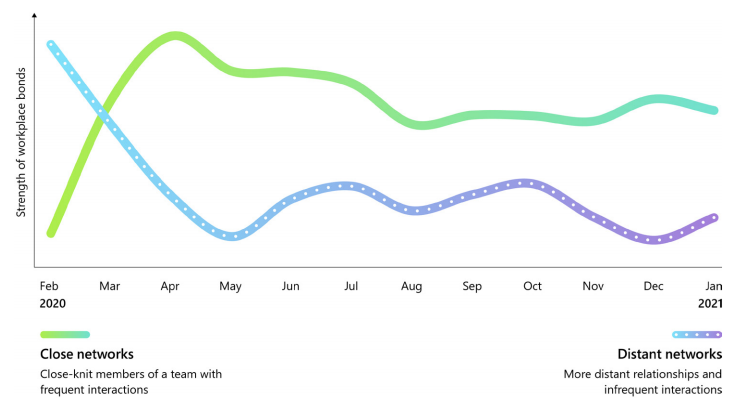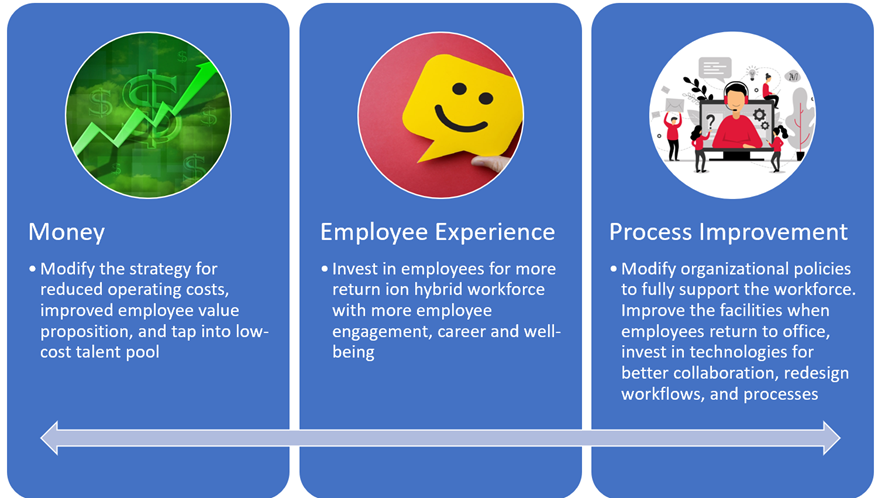When the pandemic hit us last year, we did not know how we best manage our work and home all at once. Through last year and this year, we have learnt a lot. We have learnt about how people are coping with work stress, their productivity and also how various organizations are supporting their work force. Throughout the year technology have also evolved a lot and so have people mindset about employees being productive while working from home. Some did not think that workforce can be productive while still at home. So, let’s look at some of the reports/ surveys about what has happened while people have gone through this work-home juggle for the past 1 year.
Problems and Myths
Work Trend Index survey reports below findings:
1. Hybrid work is inevitable.

2. Leaders are out of touch with their employees.
Survey finds out that 61% business leaders are “thriving” while 60% Gen Z, 61% frontline workers, and 64% new employees are struggling. Gen Z is struggling more than other generations.
3. Organizations are finding High Productive Workforce, but Workforce is Exhausted
a. Stress
i. 1 in 5 workforces say that employers don’t care about the work-life balance.
ii. 54% feel overworked.
iii. 39% feel exhausted.
b. People are spending more time on Teams and Email.
i. call (2.5x globally)
ii. Meetings are 10 mins longer (35 to 45 yoy)
iii. 45% more chats, 42% more chats after work
iv. 1 in 6 have cried with a co-worker.
c. Despite stress 50% people respond within 5 mins. Response time has not changed YOY. This proves intensity of work has improved significantly.
4. Network is Shrinking.
Collaboration trends in Microsoft Teams and Outlook show that interactions with our immediate team, or close networks, increased with the move to remote work. However, our interactions outside of that team, or distant networks, have diminished. With diminished collaboration, innovation will stop.

These findings clearly state that workforce is being highly productive, but they are risk. This is what Gartner calls out in its report that employees will not be productive while working from home is a complete myth as we found out last year. There are some other myths that Gartner points out:
a) Our existing remote work strategy will work for a hybrid workforce.
b) We need to monitor and measure what employees are doing.
c) Our jogs just can’t be done remotely.
d) We need in-person contact to sustain the culture.
e) Hybrid workforce models hurt diversity. Equity and inclusion (DEI) strategy.
f) A hybrid workforce model duplicates our IT infrastructure.
This reflects in the finding that 41% workforce is mulling over quitting their current employer.
Future Trends and Solution
Gartner proposes 2 key solutions.
For a full-fledged hybrid workforce strategy, employers need to combat 3 key issues:

Measure outcomes differently
In the hybrid work, employers need to measure outcomes differently. Gartner proposes following:

Head to the second part to understand how can we solve this problem.
Refences:
- Future-of-work-campaign-ebook by Gartner
- Microsoft Work Trend Index Report

If you liked the article, share it with your friends and colleagues. You can also send a “Thank you” note by buying me a coffee. Buy Me a Coffee

